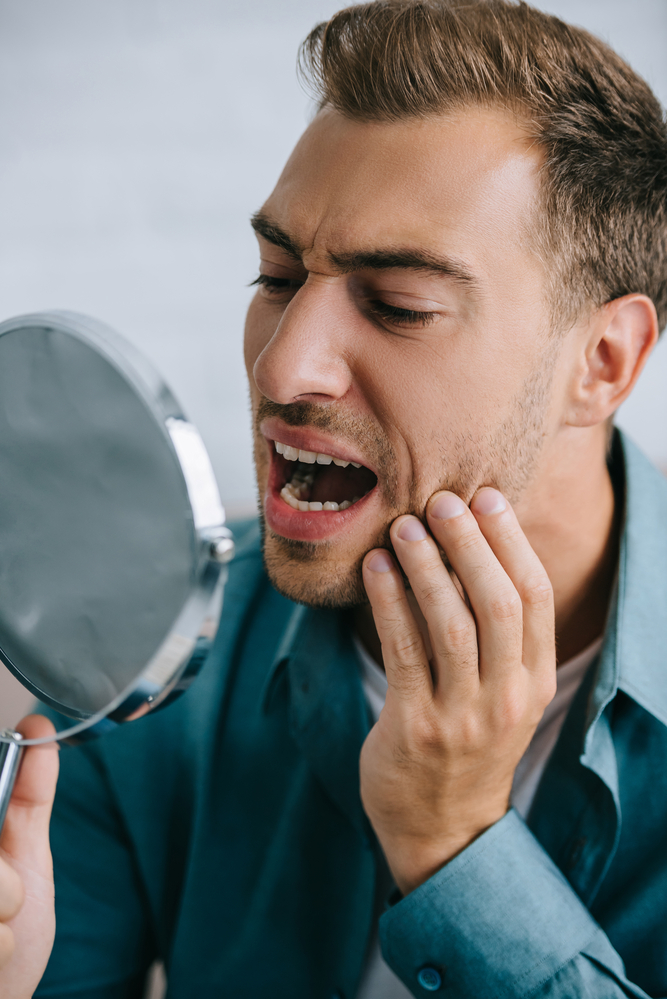Caring for Your 4 Types of Teeth
Did you know that each tooth in your mouth has a unique shape and a specific job? Recognizing their individual roles (and vulnerabilities) can help you improve your oral care...

Small cups, holes, and grooves that appear like dental potholes in the molars are a rare form of corrosion. Dental cupping, or tooth cupping, is a dangerous oral health condition and should be treated immediately. Once the holes reach the dentin, the enamel layers start to collapse. This type of tooth deterioration is problematic as it can drastically change your teeth’ size and shape.
Read on to learn the three leading causes of molar cupping and how you can prevent it from happening to your smile.
Acid Reflux
Suffering from acid reflux is a common reason for dental cupping. These acids cause maximum damage to the tooth enamel because acid reflux brings stomach acids to the mouth. Stomach abnormalities, pregnancy, smoking, or eating disorders all cause acid reflux.
Acid Erosion
Poor oral health, combined with an acidic environment in the mouth, can exacerbate tooth enamel erosion. Acid erosion can be triggered by drinking fruit juices, wine, and soda. Almost every type of wine contains sugar, in addition to strong acids that can soften the enamel on the teeth. Lemon, orange, apple, and cranberry juices are also highly acidic and sweetened by sugar.
Certain prescription medications are known for lowering the mouth’s pH level, resulting in a lack of natural saliva. Low saliva levels mean the acids in the mouth that cause dental erosion don’t get washed away. A dry mouth leads to excessive acids in the mouth that cause cupping.
Dental erosion can occur for various reasons; however, teeth grinding and clenching are among the leading causes. The friction from biting and grinding not only wears down enamel but can also fracture tooth fillings. Once tooth enamel erodes, the dentin layer below it can become exposed. This often leads to an increase in tooth sensitivity due to the cups that form in the teeth.
You may be suffering from the effects of bruxism if you have any of the following symptoms:
You can prevent dental cupping and the associated long-term damage by following some basic dental guidelines.
Stop Snacking. Cutting back on constant snacking is a great place to start, as snacking between meals leaves your mouth in a constant state of acidic formation. If harmful bacteria surround teeth at all times, it can quickly result in excessive damage.
Rinse After Eating. Water can help to wash away acids and harmful bacteria, so drinking water after eating is a great habit to keep.
Don’t Brush Right Away. Tooth enamel remains in its most vulnerable state after eating as the acid from foods can soften your enamel. It’s recommended to avoid brushing immediately after a meal and wait for at least 30 minutes to pass.
Practice Proper Dental Care. First and foremost, daily dental hygiene is essential. Brush your teeth twice a day for two minutes each time, floss every day, and brush your tongue.
Prevent Teeth Grinding. Consider a custom-fitted nightguard if you know you grind your teeth at night.
Dental bonding is the most common form of treatment for tooth cupping, so long as the erosion isn’t significant and has not reached dentin. The damaged surfaces can be bonded with a plastic-like layer to protect your teeth from further damage. The material used will match the surrounding teeth’ color and can also even out discoloration.
Severely eroded teeth will need more in-depth restorative dentistry treatments. Depending on the cupping severity, your dentist may recommend a dental crown, inlay, onlay, or composite filling for restoring the structure of a tooth.
While some holes or craters are visible by looking in the mirror, most can only be diagnosed during a dental exam. Keeping your tooth enamel lustrous and strong for years to come starts with taking excellent care of your teeth. Contact Aubrey Baudean DDS today to schedule your next checkup.